Related Content
Content

Share
Waterloo station is located on the south bank of The Thames, so the clutch of tourist destinations located on the south bank of the River Thames between Waterloo and Westminster Bridges are all within a 10 minute walk.
These include The London Eye and The Sea Life London Aquarium and The London Dungeon and The South Bank Centre including The Hayward Gallery.
to Trafalgar Square
Also within easy walking distance from Waterloo are the attractions in the Trafalgar Square area including The National Gallery and the separate National Portrait Gallery, plus Horse Guard’s Parade and The Churchill War Rooms.
Plus the route to them across the east side Golden Jubilee Bridge provides for some of the most spectacular views in all of London.
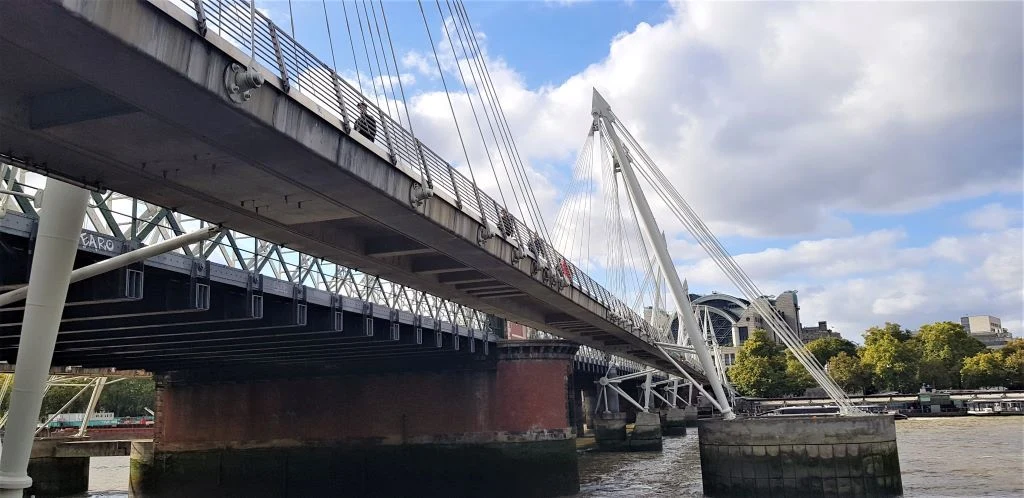
For the galleries head to the bridge on the Festival Hall side of the railway tracks, and then when you’re on the bridge, keep going ahead until you’re on the concourse at Charing Cross station, then exit through the front of the station.
For Horse Guard’s Parade and the Churchill War Rooms use the other Golden Jubilee footbridge which has views towards Westminster.
to Westminster
Westminster Abbey and the area around the Houses of Parliament is a scenic 12-25 minute walk from Waterloo station.
Take the exit from the concourse on the very far left as you walk away from the trains, as it leads to footbridge over some busy roads.
From this footbridge head towards the London Eye and then cross over Westminster Bridge.
to Somerset House
It’s a 10 -20 minute walk to the far side of Waterloo Bridge, you will see it on the right as you cross the river.
By public transport to the other tourist destinations from Waterloo
You will be taking public transport on to all other popular tourist destinations, when arriving at Waterloo by train.
Hence using my insights from being a Londoner, who frequently has to plan trips around the city centre for someone who prefers to avoid using stairs, to come up with this guide to accessing London’s most popular tourist attractions from Waterloo station.
The focus is on what’s easiest, so where relevant alternative step-free routes have been included; though comparatively few Underground stations in central London have step-free access by lift (elevator) between the trains and the streets.
All of the four Underground lines which serve Waterloo, the Bakerloo, Jubilee Northern and the Waterloo and City lines, are deep-level tube lines.
So the connections on to other central London stations are somewhat compromised, with taking a bus from Waterloo often being an easier option.
There are bus stands by the station, though they are out of sight from any of the station exits.
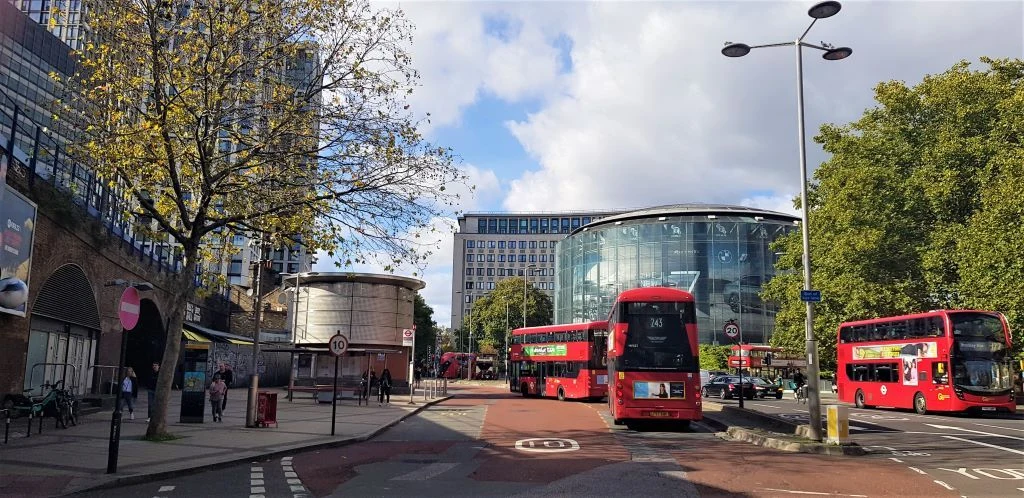
The bus stops located here are used by routes/lines 1, 59. 68, 139. 159, 168, 176, 188, 243 and 521, find them from the Victory Arch exit, by heading down to the main road, you'll see in front of you and then turn right.
Or head down to the exit on Waterloo Road, through the Jubilee line ticket hall, turn to the left once you're outside the station and walk ahead under the bridges which span the road.
Also the easier access to the Jubilee line is distinct from how to transfer to the Bakerloo and Jubilee lines and the Waterloo and City line.
The escalators and lift (elevator) which lead directly down to the Jubilee line are on the opposite side of the concourse to platforms 4 and 5.
to the British Museum
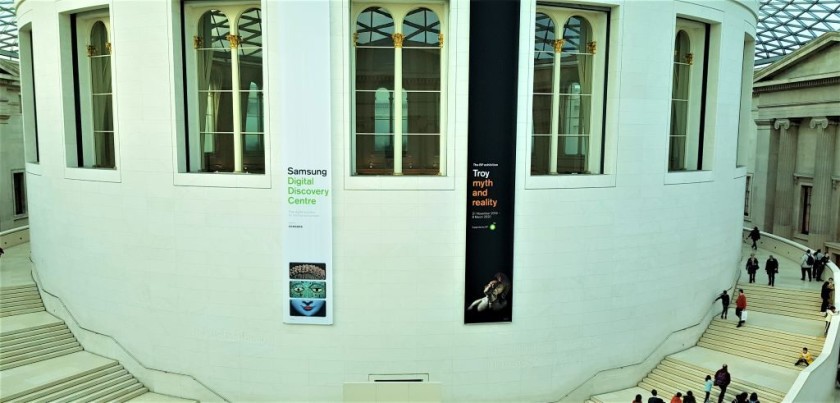
The easiest public transport option for travelling to The British Museum from Waterloo is to take bus routes/lines bus 68, 168 or 188 from bus stop K and leave the bus at the Southampton Row/Theobalds Road stop.
to The Natural History Museum, The Science Museum and The V&A Museum
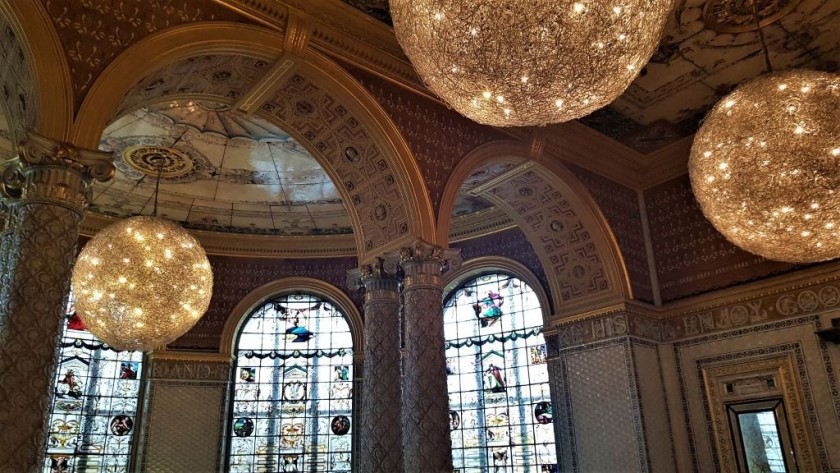
The Natural History Museum and The Science Museum and The Victoria and Albert Museum are all located on the aptly named Exhibition Road in South Kensington.
These museums are a five minute walk north of South Kensington underground station, through a subway which leads off from the ticket hall.
Take the northbound Jubilee line to Westminster and connect there for a westbound Circle or District line train to South Kensington.
Though if your train calls at Richmond or Wimbledon stations you can connect there for eastbound District line trains.
to the Tower Of London
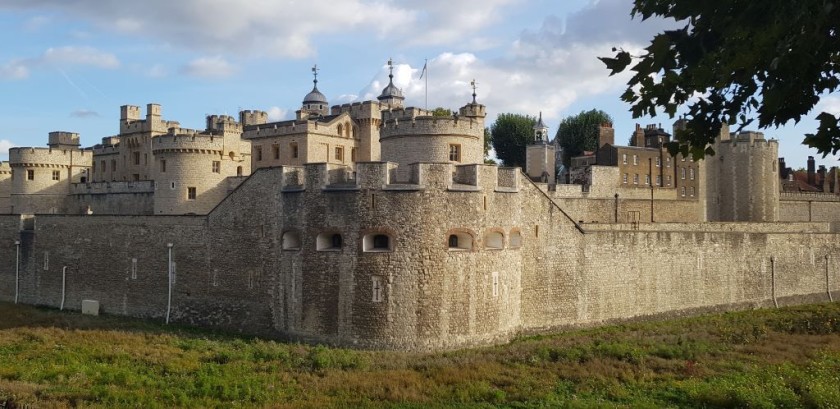
Take a northbound Bakerloo train to Embankment and then connect there any eastbound Circle and District line train to Tower Hill station, as it is a few minutes walk from the main entrance into the Tower Of London.
Or take a boat from the London Eye Pier to the Tower pier.
to The Shard and Borough Market
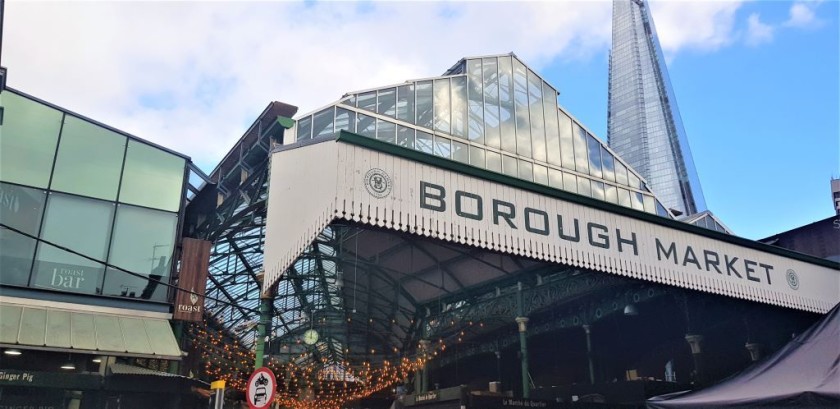
A clutch of tourist destinations are located in the London Bridge area including Borough Market (best experienced on a weekend), The Shard and HMS Belfast the south side access to Tower Bridge, plus the attractions in the adjacent Bermondsey Street area such as the Fashion and Textile Museum and The White Cube Gallery, plus on weekends, The Ropewalk.
Waterloo East station is linked to the main Waterloo station by a footbridge that can be accessed from the concourse by escalators and a lift (elevator), then in Waterloo East station slopes lead down to the trains.
All trains which depart from platforms/tracks A and C in Waterloo East will call at London Bridge, there is a departure indicator which will tell you whether the next train will be leaving from platform A or C, typically more than fifteen trains per hour will be available.
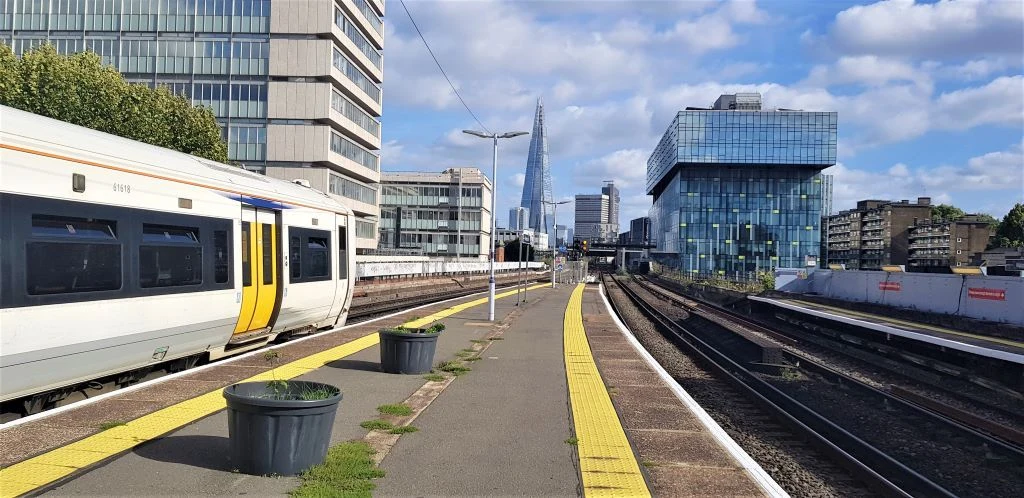
On arrival at London Bridge, for Borough Market use the exit on to Tooley Street and turn left, for HMS Belfast and Tower Bridge use the same exit and turn right, for The Shard and Bermondsey Street use the exits on to St Thomas Street.
to The Zoo and Madame Tussauds
Madame Tussauds is adjacent to Baker Street Underground station, it is on the next block, but taking the bus is the easiest means of reaching The Zoo.
The only bus route which stops right by London Zoo’s entrance is the 274
and at Baker Street it departs from bus stop C, take the bus heading to Angel, Islington.
To head to Baker Street from Waterloo take the northbound Bakerloo line.
Though an alternative option for accessing London Zoo from Waterloo is to take a northbound Northern line train to Camden Town as The Zoo is a 15 – 25 min walk from there.
Head off down the road named Parkway and then turn right on to Prince Albert Road.
Though Camden Town station can be exceptionally busy on Sundays.
to the Covent Garden area and The London Transport Museum
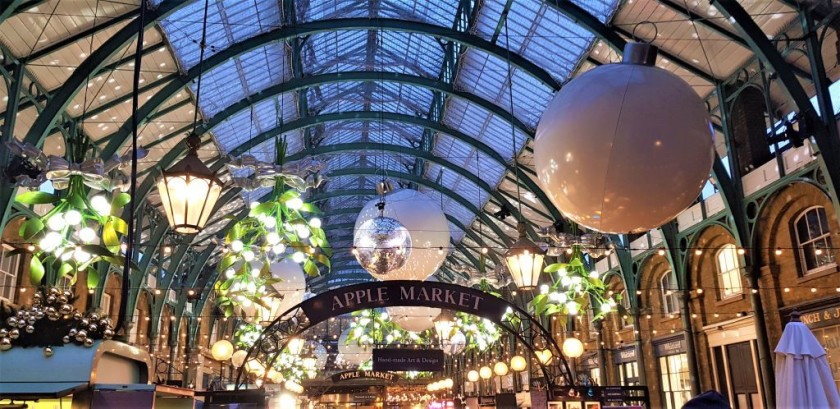
The Covent Garden area, is also where the London Transport Museum is located; and when heading there from Waterloo three options are available:
(1)Take the northbound Northern line to Leicester Square; take the exit from the station on to Cranbourn Street, turn right into Garrick Street and then left into King Street.
(2) Take bus route 139 from stop J on Waterloo Road and leave it at the Savoy Street stop, or
(3) It’s a 15 – 25 min walk, head over Waterloo Bridge, on the other side of Waterloo Bridge, you can’t miss The Lyceum Theatre where The Lion King is playing, go in front of it and then take Russell Street, which is the third on the left.
to Buckingham Palace
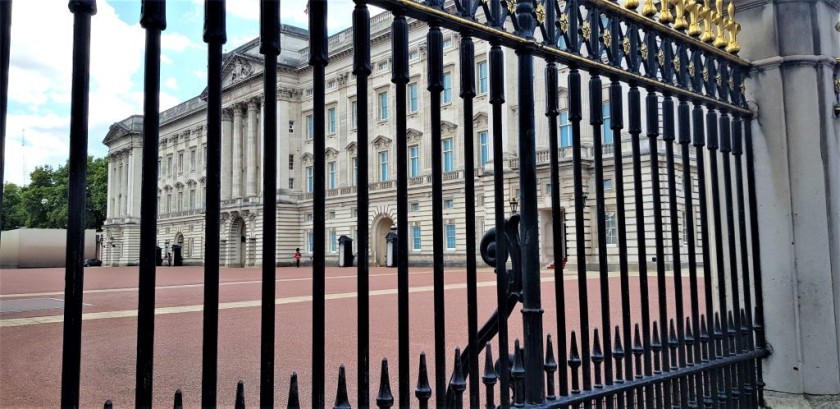
The entrance for the viewing of The State Rooms at Buckingham Palace is approximately an equal 10-15 minute walking distance from Green Park and Victoria stations.
So instead of remaining on the train to Waterloo, the option, which avoids having to take 'a tube line', is to make a transfer at Clapham Junction into one of the very frequent trains from there to Victoria station.
From Victoria station the entrance to the The State Rooms is a 7 – 15 minute walk along the road named Buckingham Gate.
When exiting from the front of the station head towards the Victoria Palace theatre, where Hamilton is being staged, take the road to the right of the theatre named Bessenden Place, then Buckingham Gate is the second road on the right.
Or remain on the train to Waterloo and take the northbound Jubilee line train to Green Park.
Unusually for a central London underground station, step-free access by a series of lifts (elevators) between train and street is available at Green Park.
to Greenwich
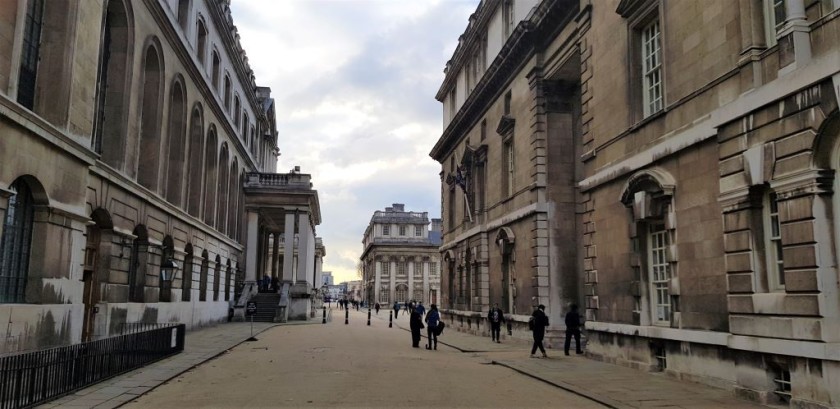
The historic center of maritime Greenwich is served by two stations:
- Greenwich station is served by mainline regular trains and is a 5 – 10 minute walk to the town centre.
- Cutty Sark station which is in the heart of the historic area.
Island Gardens station is served by the DLR, which is a hyper people mover system, on which metro style trains travel on routes mainly above ground through the Docklands business area.
Though Island Gardens station is below ground with escalators and a lift (elevator) up to street level.
North Greenwich station on the Jubilee line is in an entirely different location.
Hence there being multiple options available for a journey to Greenwich from Waterloo station;
(1) take the Waterloo & City line to Bank and connect for there DLR, the trains heading to Lewisham will all stop at Cutty Sark; the Waterloo & City line does not operate at weekends.
(2) head over to Waterloo East station and take any train to London Bridge and thee connect there for a train on to Greenwich, or
(3) Or take a boat from the London Eye Pier to Greenwich.
to The O2 Arena
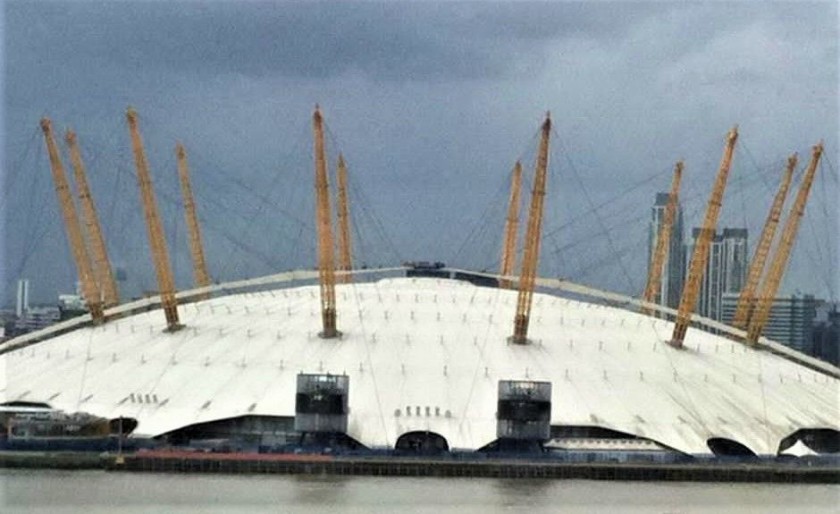
Go direct on an eastbound Jubilee line train to North Greenwich station, or take a boat from the London Eye Pier to the North Greenwich Pier.
to Wembley Stadium
Take any northbound Jubilee train to Wembley Park or, as these trains are likely to be very busy on event days, the alternative is to take the northbound Bakerloo line to Marylebone station and transfer there into trains to Wembley Stadium station, which lives up to its name with a convenient location.
Though it can worth checking the location of seats and the access route to them as Wembley Park is on the north side of the stadium and the Stadium station is to the south.
to the Sky Garden
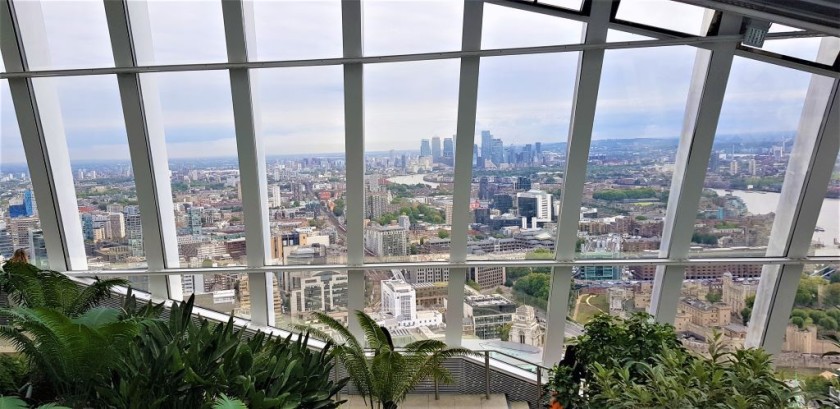
The easiest route from Waterloo station to the Sky Garden differs according to the day of the week on which you will be making the journey.
On Monday to Friday take the Waterloo & City line to Bank station, use the exit on to Lombard Street and then keep waking ahead for 7 to 10 minutes.
At weekends take a northbound Bakerloo train to Embankment and then connect there any eastbound Circle and District line train to Monument station.
to Tate Britain
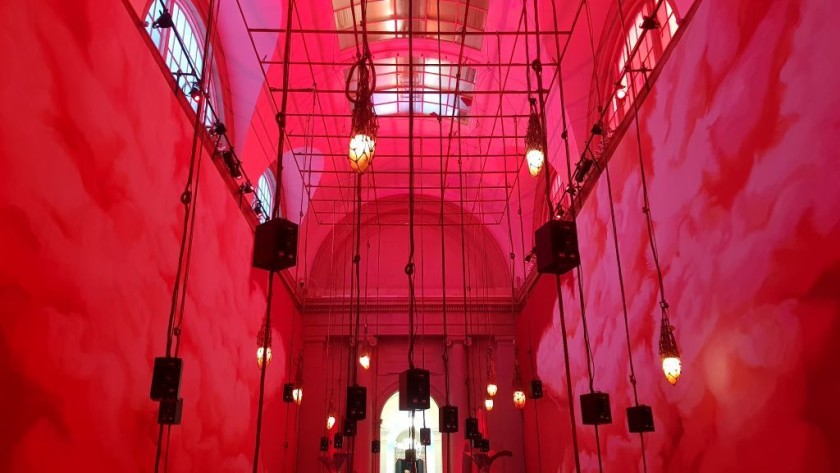
There are two optimum routes to Tate Britain from Waterloo:
(1) take the Thames Clipper boat service from the London Eye Pier to the Millbank pier.
(2) or, take the northbound Jubilee line to Westminster and connect for bus routes 87 or 88 from the Parliament Square bus stop on Whitehall.
to Tate Modern
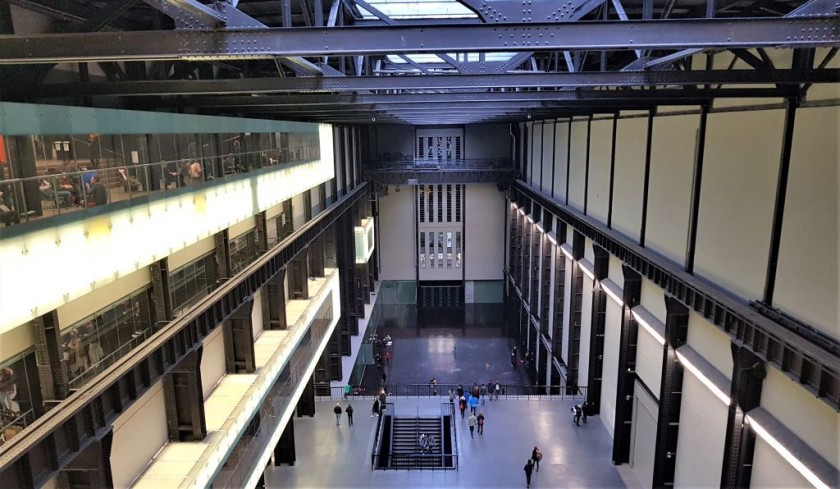
There are two optimal routes for making the transfer to Tate Modern from Waterloo station:
(1) It’s a lovely 12 – 20 min walk along the south bank of The Thames, head towards the front of the Festival Hall on the river bank.
(2) Take bus route 381 from stop V on York Road, exit from the far left of the concourse and use the footbridge to cross York Road; leave the bus at the Lavington Street stop.
to St Paul's
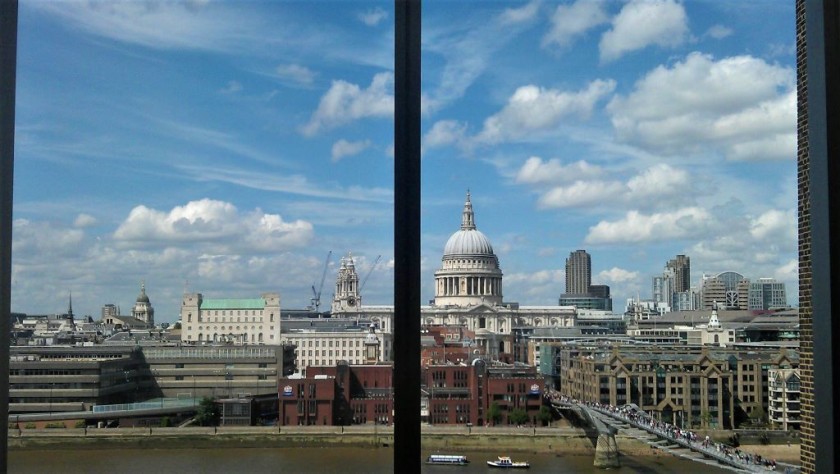
There are two optimal routes when heading to St Paul's cathedral from Waterloo:
(1) take bus route 76 from stop F on Waterloo Road which is to the left to the Jubilee line ticket hall.
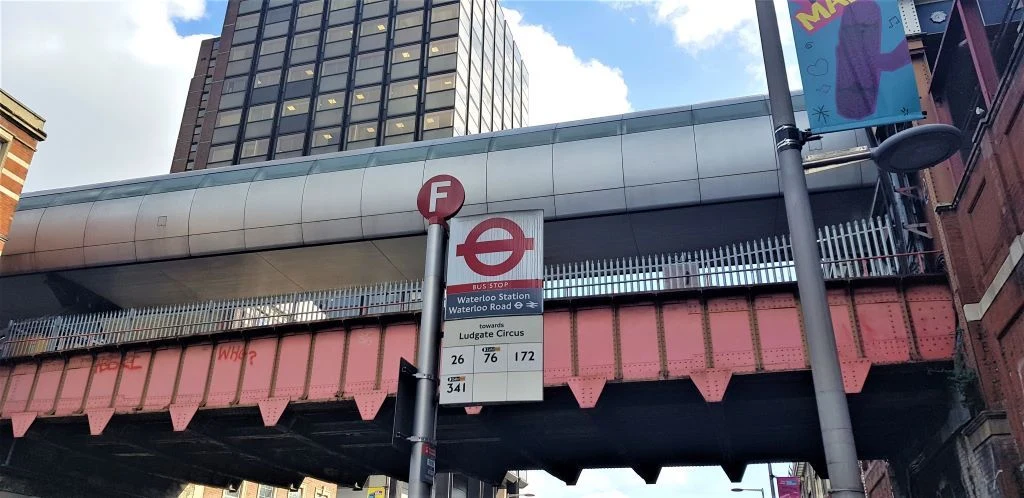
Leave the bus at the Ludgate Hill/Old Bailey stop.
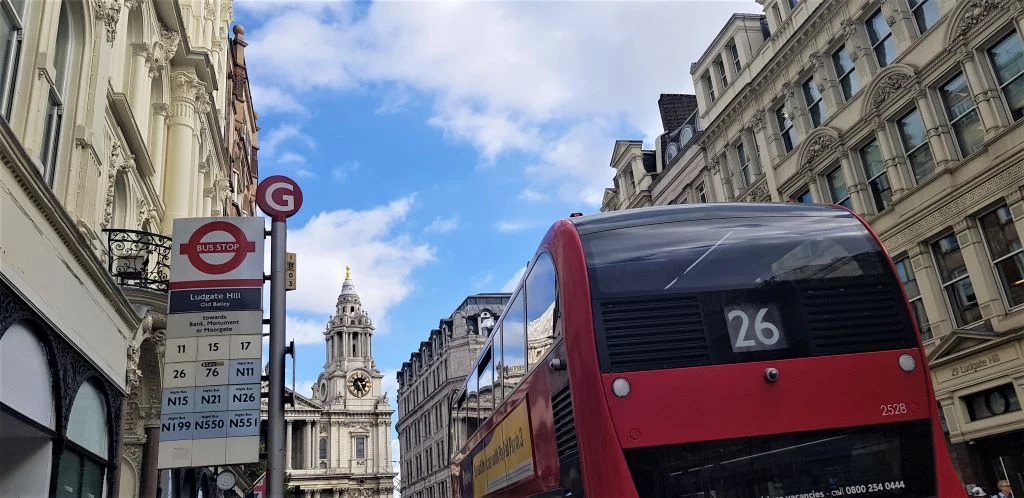
(2) Or It is a lovely 15 – 25 min walk, head towards the Festival Hall, walk along the South Bank of the River, until you can cross the Millennium Bridge in front of Tate Modern.
To Kensington Palace

The easiest option for a journey from Waterloo station to Kensington Palace is to take the northbound Jubilee line to Bond Street, and connect for the westbound Central line to Queensway station.
Though if your train to Waterloo calls at Wimbledon station you can transfer there to a District line train direct to Bayswater, the train will be heading to Edgware Road.
If your train calls at Richmond connect for the District line and then make the simple cross platform connection into a train to Bayswater at Earls Court.

If you would rather avoid taking the Underground make a transfer at Clapham Junction into one of the very frequent trains from there to Victoria station and then take bus route 52 from there.
to Kew Gardens
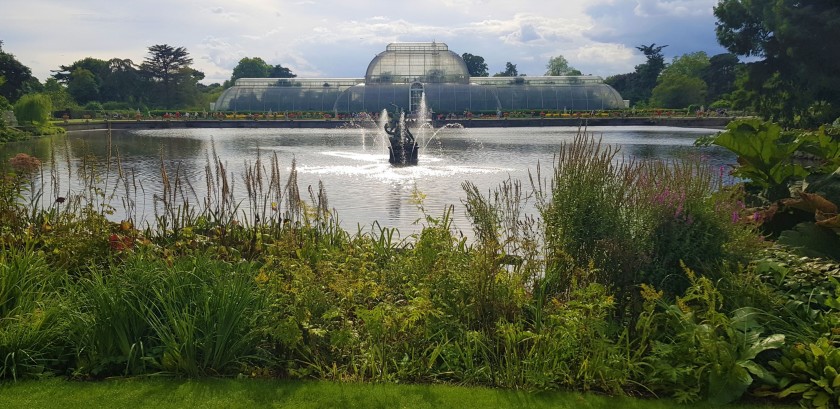
Board any train to Richmond, the faster trains complete the journey in just 16 minutes.
In Richmond station a step-free transfer is available into a District line or Overground train for a one-station hop to Kew Gardens station.
Summary of how the ticketing works
All of the ticket gates at central London stations have 'readers' which enable contactless payment.
Regardless of whether you are resident in the UK, or are visiting, there are three methods of using Contactless:
- A payment app on a mobile device, including your bank's contactless payment app, or the likes of Google Pay, Apple Pay, or Samsung Pay.
- A debit / credit card as long as it has the contactless symbol
- An Oyster card (you touch in and out as you do when using Contactless).
Good to know about using Contactless
- The system works by touching in and out.
- When using bank cards, take care to use the same card when touching out at the end of a journey, as you did when touching in at the start.
- You have to pay with Contactless on the regular red buses, you cannot pay with cash.
- When travelling by the Underground or Elizabeth line, you can save 10 - 20p per journey by paying with a banking app / card instead of an Oyster card.
- Making a Contactless payment is cheaper than buying a ticket from a station counter or machine - the price difference is usually at least 50%!
More info is available on the general London by train guide.
Using rail tickets to obtain 2-for-1 entry to visitor attractions:
National Rail, which has overall responsibility for how the trains are managed in Britain, has teamed up with a swathe of tourist attractions for a promotion which allows two entry tickets for the price of one when travelling to and from them by train.
How it typically works is:
- You can look for which attractions and guided tours are members of the scheme on the National Rail website.
- Having chosen an attraction you can then see how to book the special promotional tickets or voucher; when needed you can find promo codes on the dedicated page for each attraction on the National Rail Website.
- On the online booking page of the attraction you should see an option which corresponds to 'National Rail - Two for One offer'.
- Book your attraction tickets or voucher.
- On arrival at the attraction you present your attraction tickets and rail tickets to gain entry.
The offers are available to visitors to the UK as well as residents, so they can be a great way to save money when on a holiday.
Though what's good to know is:
- You need to present either the outward or return part of a national rail ticket to gain entry, along with your attraction tickets; So Oyster Cards and other Contactless payments, or Travelcards can't be used for the rail journey!
- The ticket machines at stations will retain one-way tickets, hence return tickets are a must - and if possible avoid putting your outward tickets through the machine, by asking the staff to open the gates/barriers.
- The two people entering the attraction on the 2-for-1 offer will both need separate rail tickets.
- The type of rail ticket, how much you paid for it and the distance travelled all don't matter, any pair of return rail tickets will suffice.
- If you have one, you can use Railcards to book the rail tickets.
- Rail tickets are available as an alternative to Oyster cards when travelling between any two National Rail stations in the Greater London area; a National Rail station is any station not solely served by the Underground or DLR, so it includes stations solely served by the Overground or Elizabeth Line trains.
Therefore you can buy return rail tickets to a central London station, or to a station located by an attraction, from another station in the London area.
However before booking the 2-for-1 offers on the attraction websites, carefully check how much you will be saving by only paying one entrance fee, compared to the costs of booking two rail tickets.
If you look up the journey on the National Rail website you'll get a good idea of the train ticket costs.
It's likely you won't be able to claim a refund on the attraction tickets, if you then decide not to go ahead, because the rail tickets + the 2-for-1 offer won't save you money.
Though it's highly likely you will make a substantial overall saving.
But if you have already booked two return rail tickets and then find an attraction(s) that you want to visit, go ahead and book the 2-for-1 offer, as you'll then be certain of saving money!
Where can you go and what can you see
The full list of tourist attractions participating in the scheme can be found on the National Rail website.
Popular attractions in central London include:
- Westminster Abbey
- St Paul's cathedral
- the London Transport Museum
- The London Eye
- The Tower Of London (certain times of year only)
Attractions in the wider London area, with easy access from local rail stations, include:
Attractions which are an easy day trip from London include:
- The Bluebell Railway; very easy connection at East Grinstead station.
- Steam - The Museum of the Great Western Railway
- There's a clutch of attractions in Brighton including:
the charming Toy and Model Museum and The Royal Pavilion and Sea Life Brighton - Chessington World Of Adventures which is walkable from Chessington South station, which has trains from London Waterloo.
- Thorpe Park which can be accessed by taking a train from London Waterloo to Staines and then connecting into a bus service.
- Legoland Windsor which can be accessed by taking buses from central Windsor that offer straightforward connections with trains from London Paddington and trains from London Waterloo.
Though carefully check the full details for the amusement park offers as they exclude certain dates and periods of time, which tend to coincide with school holidays.
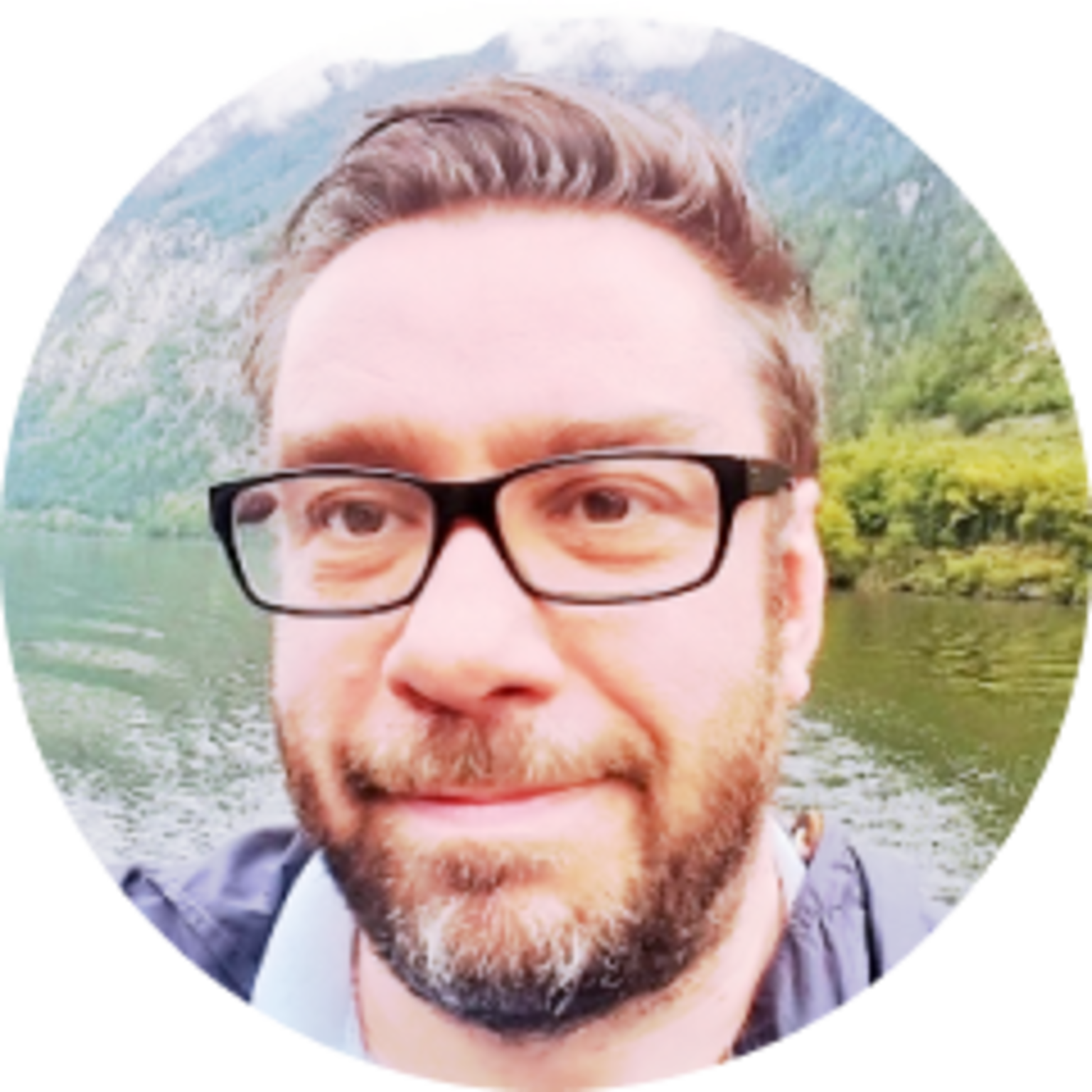
Simon Harper
I wanted to share my passion for train travel and explain how anyone can take the fantastic journeys I have taken.

This is one of more than 100 train travel guides available on ShowMeTheJourney, which will make it easier to take the train journeys you want or need to make. As always, all images were captured on trips taken by ShowMeTheJourney.
This second version of ShowMeTheJourney is exciting and new, so we are genuinely thrilled that you are here and reading this, but we also need your help.
We’re striving not to let anything get in the way of providing the most useful service possible, hence a facility has been set up with DonorBox which can be used to support the running costs and make improvements.
Instead of advertising or paywalls, your financial support will make a positive difference to delivering an enhanced service, as there’s a lot of ideas which we want to make happen.
So if you have found the info provided here to be useful, please consider saying thank you.




